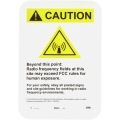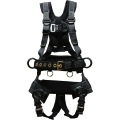Climbing communications towers that are hundreds and sometimes thousands of feet in the air, is a very dangerous job! Most towers have no mechanical lifts, so getting to the desired height means scaling rungs hand-over-hand, usually while wearing bulky safety gear and carrying an equipment bag.
While the risk of falling is great, the freedom is greater. The Following are the 4 Things A Good Tower Climber Never Forgets
#1: A Proper Climb Plan


During the planning process, consider the following:
- Do you have the appropriate work permits?
- Do the carriers know the day(s) and time(s) of day that installers will be on the tower?
- Have arrangements been made to ensure reduced RF transmission levels while the installers are on the tower?
- Has a proper Lockout-Tagout (LOTO) procedure been implemented in order to protect personnel on the tower, especially if RF transmitters are controlled remotely?
A proper climb plan ensures that everyone is informed and that the work can be conducted on the tower safe and effectively.
#2: Observing Proper Warning Signage


By observing the proper warning signage, climbers receive a clear, bold message that they are entering a hazardous zone. If communications towers lack such signage, climbing them should be avoided until the RF conditions at that site can be verified by both the occupying carriers and the tower owners.
#3: Keeping Climbing Safety Gear in Good Repair and Within Allowable Dates-of-Use


Don’t take unnecessary chances if any safety gear has an allowable date-of-use that has expired, do not attempt to use that gear beyond that date.
#4: Climbing With Inadequate Safety and Protection Gear
Weather and hazardous conditions that exist high up on a tower are not always evident on the ground. Experienced climbers recognize that before attempting to scale a tower, they must be fully suited with a helmet, safety glasses, gloves, jackets, pants, boots, as well as outfitted with a safety harness, lifeline, carabineers, lanyards, rope grabs, and tool belts.
Taking shortcuts is never a good idea. The investment in all the necessary equipment and gear will pay off the first time it’s needed several hundred feet in the air.
These safety measures are not just ideas or suggestions. They are essential in every good climbers climb to avoid hazards and to follow sound, accepted tower climbing techniques.
Our life depends on them.
